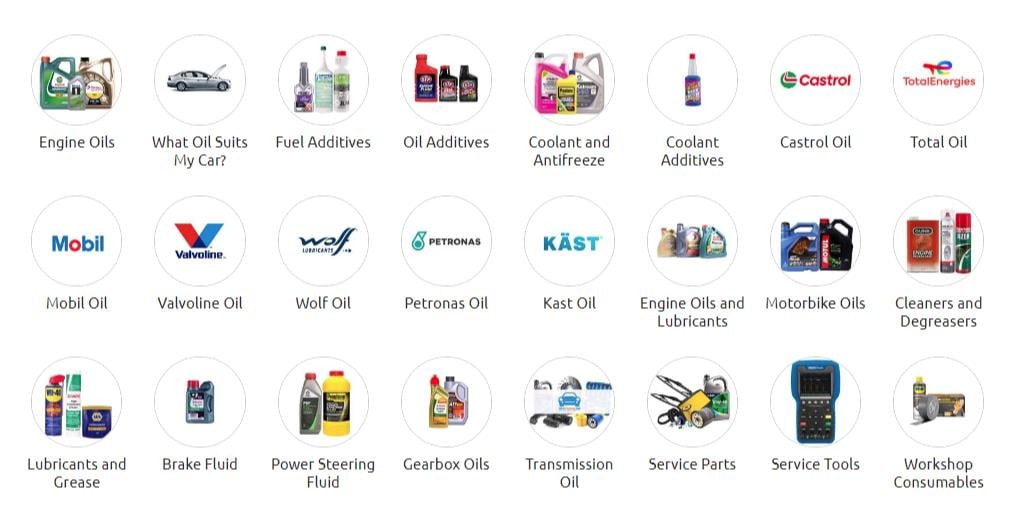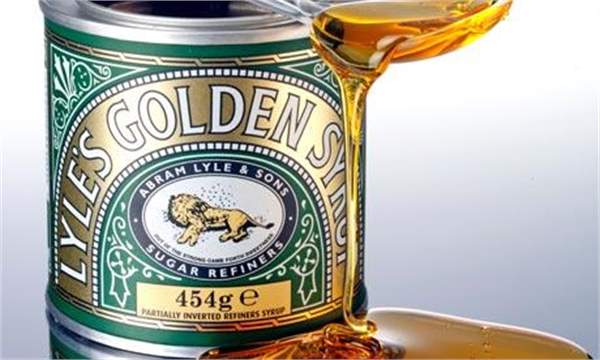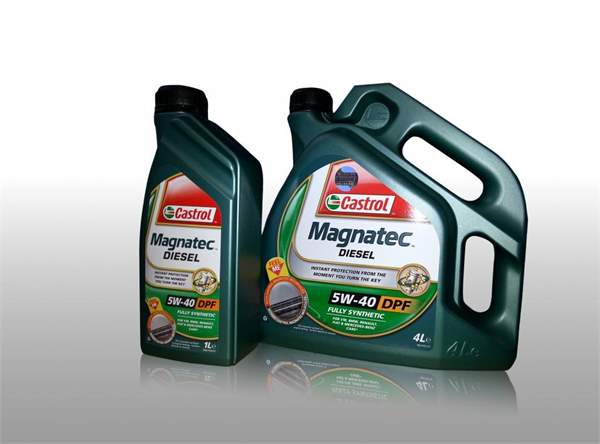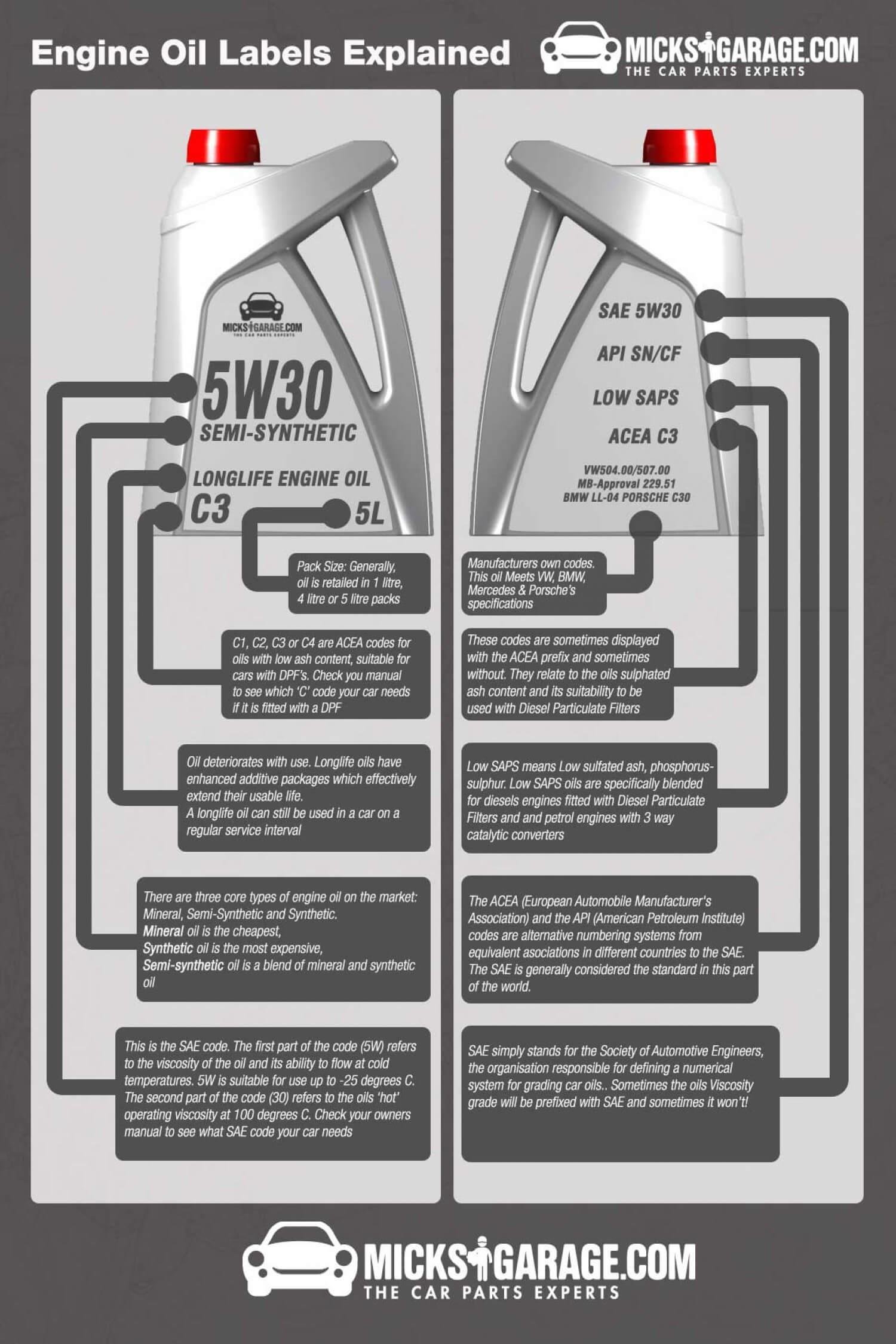So you want to top up your car's engine oil and you want to do it yourself - maybe you've seen our DIY videos! You know where the dipstick is, you know the procedure and all you need now is some oil. But you're wondering, which engine oil for my car?
Oil is oil, right? But when you go to buy the stuff, there’s a huge range of options available at all kinds of prices. When you pick up a bottle or look more closely at the specifications you’ll be met with a seemingly random series of letters and numbers and, what's worse, they're similar to those on another identically priced bottle, but different enough to make you wonder if there's something else you should know! Fear not, we’re here to talk you through what it all means, in a (mostly) jargon-free manner. We've let the boffins get in on this though as they're the only ones that truly understand it all...
If you’re not really interested in what all the jargon means but just want to make sure you get the right motor oil for your car you can use our car engine oil finder - simply enter your reg and away you go - we'll show you a full list of the exact oil that will suit your car.

There are three core types of engine oil on the market: mineral, semi-synthetic and synthetic.
- Mineral oil is the cheapest and is essentially a constituent of crude oil, produced after it is refined. Few car companies recommend this these days as it generally doesn't come with the engine-cleaning detergents that are required these days and has a limited temperature operation range. Saying all that, it's perfectly fine for older engines whose tolerances are less extreme and that are used in a mild climate without freezing or really hot weather.
- Synthetic oil or Fully Synthetic oil is the most expensive, but for a reason. It has been engineered by scientists to work over a wide range of temperatures and conditions, while reducing drag on the engine to help reduce fuel consumption. It also actively cleans the engine's internals as it’s pumped around.
- Semi-synthetic oil is a blend of mineral and synthetic oil to help bring the price down.
Understanding Engine Oil Viscosity
The large numbers on a bottle like 5W30 engine oil or 10w40 engine oil refer to its viscosity. It's loosely defined as the 'flowability' of the oil. Put another way, thin oil has low viscosity, while thick car oil has high viscosity. So for example, beer has low viscosity and golden syrup has high viscosity. Just don't put those in your engine...! Ambient temperature, i.e how hot or cold it is outside also has an effect on the engine oil in your car. When it’s cold, the oil will flow more slowly, when it’s hot, the oil will flow more quickly. However, In order to lubricate an engine properly the oil must be able to flow at a consistent rate through a broad range of temperatures. To put this in perspective, imagine a jar of Golden Syrup, put it in the fridge (at roughly 1-3 degrees C) for a few hours, then take off the lid and try to pour the syrup out. It will start to flow but  extremely slowly as the cold temperature has made it more viscous. Now take your jar of syrup and stick it in the oven for 20 minutes at 100 degrees C then take the lid off and pour it out. It should flow out extremely easily. The heat has reduced the viscosity and allowed the syrup to flow more quickly. The same thing happens with engine oil. If you live in Siberia and it’s -20 degrees outside, when you go to start your car’s engine, the oil inside it needs to be thin enough to flow and lubricate all the internal components as soon as you turn the key. Similarly, if you live in Dubai and it’s 50 degrees outside and you’re driving in heavy traffic your engine oil needs to stay viscous enough to lubricate properly. At the moment there is no one oil that can cope with all these situations and for that reason, the SAE (Society of Automotive Engineers) introduced a grading system which tells us how suitable a grade of oil is for a certain temperature range. So…oils are manufactured to different viscosities in order to be effective in different climates and operating conditions. To broaden the range of temperatures that oils can be used in, grades of oil are combined. These are known as Multi-grade oils
extremely slowly as the cold temperature has made it more viscous. Now take your jar of syrup and stick it in the oven for 20 minutes at 100 degrees C then take the lid off and pour it out. It should flow out extremely easily. The heat has reduced the viscosity and allowed the syrup to flow more quickly. The same thing happens with engine oil. If you live in Siberia and it’s -20 degrees outside, when you go to start your car’s engine, the oil inside it needs to be thin enough to flow and lubricate all the internal components as soon as you turn the key. Similarly, if you live in Dubai and it’s 50 degrees outside and you’re driving in heavy traffic your engine oil needs to stay viscous enough to lubricate properly. At the moment there is no one oil that can cope with all these situations and for that reason, the SAE (Society of Automotive Engineers) introduced a grading system which tells us how suitable a grade of oil is for a certain temperature range. So…oils are manufactured to different viscosities in order to be effective in different climates and operating conditions. To broaden the range of temperatures that oils can be used in, grades of oil are combined. These are known as Multi-grade oils
Understanding the Numbers:
Most oils these days are Multi-grade (multi viscosity) and will have two numbers on the label separated by a ‘W’ (e.g. 5W-30) There are oils with a single viscosity rating (e.g. SAE 20W) known as Mono-grade oils but they are less common these days. The SAE tests oils and assigns an arbitrary weight or grade (viscosity) number to the oil depending on its flow rate at different temperatures. The SAE numbering systems goes: 0, 5, 10, 20, 30, 40, 50, 60. The grade refers to the oils ability to flow or lubricate an engine at a certain temperature. The lower numbers are thinner, less viscous oils suitable for low temperatures generally found in winter. The ‘W’ seen in an oil’s grade stands for ‘winter’ (eg 5W30)
- 0W oil will flow correctly up to -30 degrees C
- 5W oil will flow correctly up to -25 degrees C
- 10W oil will flow correctly up to -20 degrees C
- 15W oil will flow correctly up to -15 degrees C
- 20W oil will flow correctly up to -10 degrees C.
The flow rate of oils are also tested at a ‘hot’ temperature of 100 degrees C to simulate a running engine. The 2nd number in a Multi-grade oil refers to the ‘hot’ viscosity of the oil. So a 5w 30 engine oil at 100°C will only thin as much as its higher rating. Think of it like this: a 5W30 oil is a 5-weight oil that will not thin more than a 30-weight oil when it gets hot. Multi-grade oil ratings look like this: SAE 5W-30. This is based on a 5W oil, tested at -25 degrees C, but at high temperature, it will not thin out more than a '30' weight oil would. SAE simply stands for the Society of Automotive Engineers, the organisation responsible for defining a numerical system for grading car oils. There are alternatives, such as ACEA (European Automobile Manufacturer's Association) and the API (American Petroleum Institute), but SAE is generally considered the standard in this part of the world.
Low SAPS
- If you have a modern turbodiesel car that has a diesel particulate filter (DPF) in the exhaust then you must use low SAPS oil.
- SAPS stands for 'Sulphated Ash, Phosphorous, Sulphur' and it's often referred to as simply low ash oil.
- In Europe, according to the ACEA, low ash oil is labelled as C1 (0.5% ash), C2 (0.8% ash - better suited to higher performance engines) and C3. In America there's CJ-4.
- So an engine oil labelled 5W30 C1, C2 or C3 is a 5w30 grade oil suitable for cars fitted with DPF’s. If your car has a DPF be sure to check if C1, C2 or C3 specification oil is required.
Carmakers' own oil grades
- Just to confuse everyone, many car makers have their own grades of oil that must be used in specific models. These almost always have an equivalent in the SAE grading system so can be cross-referenced.
- Specific Volkswagen Group cars (Volkswagen, Audi, SEAT and Skoda) are supposed to run grades that are marked 'VW 500.00' to 'VW 508.00'.
- BMW gives its approval to oils with its 'BMW Longlife' rating, or LL rating indicating that they're suitable for long service intervals on specific models. Example: BMW LL04
- Mercedes-Benz approved oils are marked 'MB-Approval' followed by a number that refers to a paragraph and page of the 'Mercedes Bluebook' used by dealers.
- Renault, Peugeot, Citroen, Porsche and others also use their own codes
- .

Top tips
- Don't automatically assume that the most expensive oil is the best option for your engine. Always stick to the oil grade and specification recommended by the car manufacturer, as the engine would have been developed using that.
- Though it's tempting to go for the oil grade with the widest rating, it's best to choose one with the narrowest range that still suits the ambient temperatures you're likely to experience, as it will be better optimised over that range.
- If you decide to swap from an inferior oil to using synthetic oil it's advised that you change the oil and filter soon after, as it's possible that carbon deposits and other detritus could be cleaned out by the new oil.
- Using synthetic oil does not mean you can extend the amount of time between engine oil change. The detergents and other chemicals deteriorate over time and reduce the oil's effectiveness.
- Always change your oil filter at the same time as your oil, as it catches unwanted material before it's circulated to the rest of the engine.
- Never, ever, drive your car with the engine oil light illuminated. It means that the oil pressure is low, which could lead to catastrophic engine failure in a very short amount of time.
- Get into the habit of checking the oil level of your engine regularly - once a month for newer cars used infrequently, or even weekly for older cars and those used for high mileage.

Explore Car Engine Oil By Grade
Explore Engine Oil by Brand
Read more technical articles